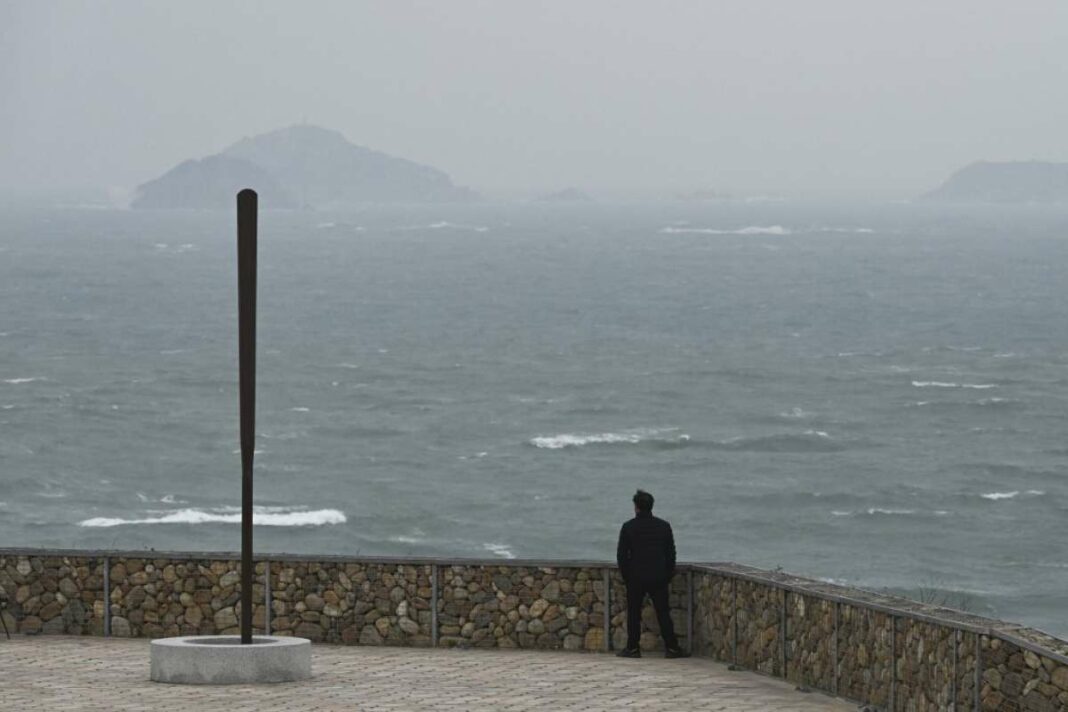The Taiwan Strait, a critical maritime route, is currently experiencing heightened military activity from China, surpassing previous tensions. This narrow waterway, vital for global trade and home to Taiwan’s semiconductor industry, faces risks of conflict that could disrupt the global economy. China’s recent naval maneuvers, including a significant presence of vessels and aircraft, reflect ongoing pressure on Taiwan amidst historical tensions, raising concerns over potential regional instability and the implications for U.S. and allied nations.
The Taiwan Strait: A Crucial Maritime Corridor
At just 130 kilometers wide at its narrowest point, the Taiwan Strait is a vital waterway that handles over 20% of the world’s maritime traffic. Recently, Taiwan has reported an extensive naval presence from China in its waters, surpassing the military buildup seen during the August 2022 tensions following the visit of former U.S. Speaker Nancy Pelosi to Taipei. As of now, Beijing has not provided any comments regarding this display of military strength.
This article provides an overview of the current situation in the Taiwan Strait, a region marked by increasing military confrontations and strategic significance.
Understanding the Location of the Taiwan Strait
The Taiwan Strait serves as the boundary between mainland China’s Fujian province and Taiwan, an island home to over 23 million residents. With a narrow span of 130 kilometers, this strait is crucial for global trade, as it facilitates a significant portion of international shipping. Notably, some smaller Taiwanese islands, such as Kinmen and Matsu, are located mere nautical miles from the Chinese shoreline.
Following the communist takeover led by Mao Zedong in 1949, the Chinese nationalist government retreated to Taiwan, which was formerly a Japanese territory. Since then, the Chinese government has maintained that Taiwan is part of its sovereign territory and has not ruled out the use of military force to assert control over the island.
The Importance of the Taiwan Strait
In 2022, the Taiwan Strait witnessed the movement of goods valued at approximately $2.45 trillion, as reported by the American Institute Center for Strategic and International Studies. Taiwan is also a key player in the production of advanced semiconductors, which are essential for many modern technologies, including artificial intelligence. The island produces about 90% of the world’s most advanced chips.
A blockade or conflict in this region would pose significant threats to the global economy. According to Robert A. Manning from the Stimson Center in Washington, the repercussions would be severe: “Markets would collapse, trade would contract, and supply chains would be disrupted.” A study from Rhodium Group estimates that the financial impact on companies reliant on Taiwanese chips could reach as high as $1.6 trillion annually.
An invasion of Taiwan could not only threaten its democratic way of life, which has evolved significantly since the end of dictatorship in the 1990s, but also risk igniting a broader regional or global conflict. The United States, while not formally recognizing Taiwan, remains its primary arms supplier, and nations like Japan and the Philippines could be pulled into the fray given their geographical proximity.
Insights into Current Military Activities
Unlike its previous military exercises, China has opted for silence regarding its current maneuvers. A senior Taiwanese security official reported that nearly 90 Chinese naval vessels were active in the waters of the ‘first island chain’ of the Pacific, which includes key areas like Okinawa, Taiwan, and the Philippines. Additionally, the Taiwanese Ministry of Defense recorded the presence of 47 Chinese aircraft near Taiwan within a 24-hour period, marking a peak since October.
During a press conference, the Chinese Ministry of Foreign Affairs declined to comment on the military activities, redirecting inquiries to other authorities. These developments follow Taiwanese President Lai Ching-te’s recent visit to U.S. territories in the Pacific, which drew sharp criticism from Beijing.
Historical Context of Tensions in the Taiwan Strait
In recent years, China has increased its pressure on Taiwan, conducting four major military exercises since 2022. Notably, significant military drills, such as ‘Joint Sword-2024A,’ were executed following the inauguration of President William Lai, and Taiwan was encircled in April of last year after a meeting between President Tsai Ing-wen and former U.S. Speaker Kevin McCarthy.
A spokesperson for Taiwan’s Ministry of Defense has indicated that the scale of the current Chinese naval operations exceeds those of the previous four exercises since 2022. The strait has historically been a flashpoint for crises, the most notable instance occurring from 1995 to 1996 when China conducted missile tests around Taiwan after Taiwanese President Lee Teng-hui’s visit to the United States.
